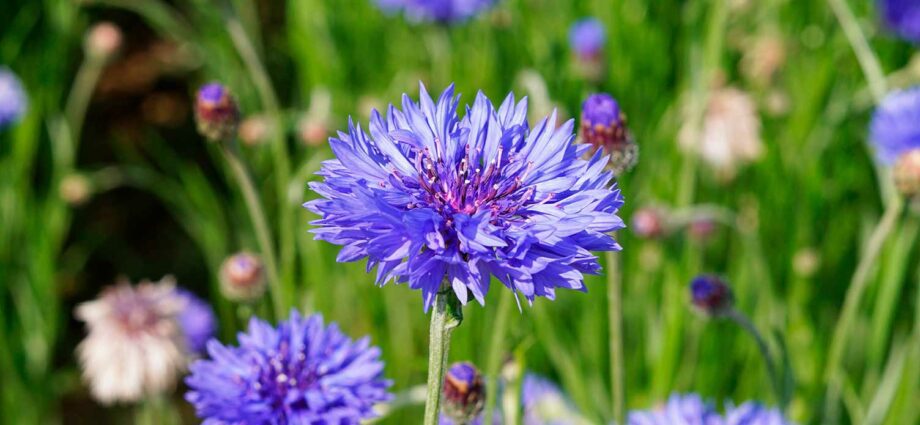Cornflower garden
It is a herbaceous plant with over 500 perennial and annual varieties. It is appreciated among gardeners for its exquisite beauty, unpretentious care and healing properties. In medicine, cornflower is used as an anti-inflammatory and wound healing agent. A decoction of the flowers of the plant is used to care for the skin of the face, and also as a pain reliever.
Description of the plant cornflower garden
Cornflower belongs to Compositae plants, has an erect or lying stem, with dissected, drooping leaves and inflorescences in the form of baskets of white, yellow, blue, red, lilac or orange hue.
The garden cornflower is very popular among herbaceous plants for outdoor use.
The plant adapts well and grows on any, even poorly fertile soil, its main characteristics:
- loves sunny places;
- It does not require special care;
- resistant to severe frost;
- in one place can live for about 10 years.
Among the popular cornflowers, several types can be distinguished, which are more often used in floriculture to decorate alpine slides, lawns and flower beds.
- Whitewashed grows no more than 50 cm with pink flowers up to 5 cm in diameter. It does not bloom for long, from July to September.
- White reaches 30 cm in height with white double flowers, a rather rare plant species and is even listed in the Red Book.
- Yellow has an erect, powerful stem 1 meter high, with yellow double flowers.
- Pink – with a strong stem up to a meter high and slightly swollen inflorescences of a rich pink color. Blooms from June to late July.
- Large-headed – with an erect stem up to 120 cm in height and fairly large flowers of a yellow or beige shade.
The garden cornflower gets along well with other plants and will be a good background for low-growing and ornamental crops in a flower bed.
The seeds of annual cornflowers are sown in April directly into the soil prepared in advance. Perennial varieties are first germinated in room conditions for seedlings, then transplanted into open ground in October. The plant can also be propagated by cuttings or by dividing an adult bush. It is necessary to separate the bush after flowering, after pruning in advance. The plant should be planted at a distance of 50 cm from other crops, this will allow it to independently form a beautiful shape.
To maintain a beautiful appearance, dry flowers should be removed in a timely manner, in addition, this helps to prevent unwanted reproduction throughout the entire area.
Like many other outdoor herbaceous plants, cornflower blends well with other crops. It is maintenance-free and will delight the eye for many years, giving the garden the exquisite beauty of its delicate flowers.










